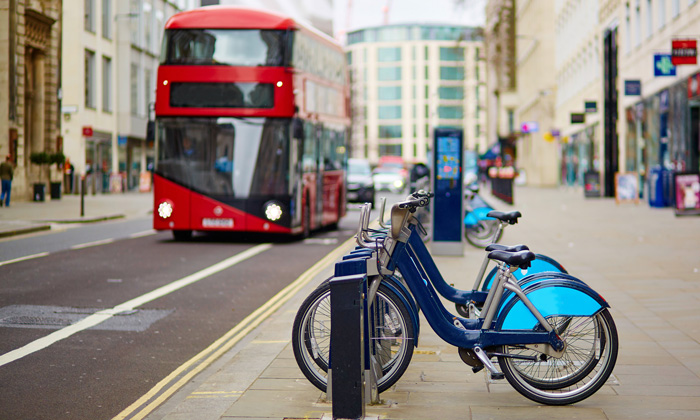Talking transport with UITP Secretary General Alain Flausch
- Like
- Digg
- Del
- Tumblr
- VKontakte
- Buffer
- Love This
- Odnoklassniki
- Meneame
- Blogger
- Amazon
- Yahoo Mail
- Gmail
- AOL
- Newsvine
- HackerNews
- Evernote
- MySpace
- Mail.ru
- Viadeo
- Line
- Comments
- Yummly
- SMS
- Viber
- Telegram
- Subscribe
- Skype
- Facebook Messenger
- Kakao
- LiveJournal
- Yammer
- Edgar
- Fintel
- Mix
- Instapaper
- Copy Link
Posted: 12 December 2017 | Luke Antoniou - Intelligent Transport | No comments yet
Alain Flausch, the retiring Secretary General of UITP, spoke with Intelligent Transport about his and UITP’s achievements in recent years, the future of public transport, and why education and funding are crucial to further innovation in the industry…


In your five years as Secretary General, what would you say is your biggest achievement?
My achievements, of course, are UITP’s achievements and there are three main things: In the last five years, UITP has become an innovative association; it has focused on offering real quality knowledge to its members; and it has made that knowledge available to the global industry.


Alain Flausch (Credit: UITP)
Professional associations are often viewed as very conservative, but UITP has striven to become more progressive. We’ve worked to improve the perception of UITP around the world; proving ourselves to be an innovative association that engages in debates about the future of mobility. Previously, public transport didn’t have that image.
In a lot of places, the world of public transport is still seen as quite ‘dusty’, but I don’t believe this to be true. When I adopted the role of Secretary General, I got the impression that some of the papers and research we’d previously produced were no longer relevant enough for modern day public transport, so now we’re really trying to get the most from our members as writers and spokespeople. We’ve become far more robust in our approach – with locations in 15 other countries throughout the world – and can now focus on international affairs more easily.
What have been the most significant changes in the industry during your time as Secretary General?
During my public transport career – which is longer than the five or six years I’ve spent as Secretary General – I think one of the most significant changes is client orientation. When I began in the industry, it was very engineer driven, but now it’s focused more on outputs and doing what the customer expects.
The second major change is that the industry is smarter – not in terms of the people within it, but in terms of the tools it’s using to tap into what is happening in mobility networks. Though UITP was already relatively well equipped when I joined, we were blind to some extent. For example, we might have opened a new line, or expanded a bus fleet, but with no real knowledge as to whether those actions would ultimately improve services. Now, we have a much better idea of the impact our actions will have; we can judge situations in real time and be far more reactive.
However, financing remains a significant issue in the public transport sector. Today, I’m advising those in transport networks to try and work more closely with politicians, to make them see that a lack of financing, funding and tax levying are major hurdles to innovation. The stability of the whole sector is put at risk if we have to beg for subsidies every year.
My advice is to try and diversify your source of finance to the point that you’re not relying solely on public funding. Crossrail in London is a great example; its method of funding is a model that many projects can learn from.


An alternative route is to follow in Switzerland’s footsteps; they have creative funds to be used for innovation, and the projects that receive funding are chosen by the citizens. They take a vote and if 65 per cent of the Swiss people vote in favour of developing public transport, that’s what will happen. Once the people have their say, there’s no way to really delay progress.
How important is it to encourage networks to collaborate with private firms in order to gain funding?
I think it’s critical. Every major city requires the backbone that public transport provides and we can’t pretend otherwise. The increasing number of connected, smart mobility services that make up that backbone requires a lot of money, but you cannot lay in wait for years to receive government funding.
We need permanent funding schemes that allow us to capture the added value we bring to property (or PPP schemes) to enable a balanced means of providing infrastructure. We really need our major members to dedicate significant effort to this cause.
The ‘stop and go’ of waiting for government money is terrible for public transport. You need a permanent source of funding – not having one, I think, gives the public mixed messages. We’re trying to encourage more people to use public transport, yet governments and politicians take so much persuasion to invest. The industry needs financial expertise – and, to some extent, tax expertise – in order to gain parliamentary support to develop new services. This is a skill that needs to be developed.
Can you highlight one technological advancement or innovation that has had the biggest impact on public transport in the last five years?
The rise of digitalisation as an enabler of smarter solutions has had, and is still having, a very dramatic impact. It is allowing us to spend money more efficiently; in some places, there are buses running late at night with only one passenger and it’s absolutely unsustainable.
Moving away from fixed routes is a paradigm shift, but the savings will eventually allow authorities to invest more money into services like Uber, which in themselves will be more cost-effective than a service on a fixed route.
This change will introduce more ‘smart’ jobs for people, and the push toward automation will do the same. Metro drivers, for example, have important but boring jobs, so as automation starts to take these jobs, it is the industry’s responsibility to begin to re-train and re-educate the drivers to adopt more relevant and interesting roles. This future is here, so trade unions must work together with transport networks to engineer better positions for their members – another issue the industry is facing.
The people in these jobs are largely the older generation and we don’t want them to lose their jobs because they don’t deserve it. This means we must begin the re-education process now. It’s inevitable that the industry goes through these changes, but it needs to transform in such a way that its workers learn a new job before their old ones become obsolete. Drivers will most likely be moved into more service-based roles, such as client care.
Do you have high hopes for the next five years of development in public transport services? Will we see a spike in the adoption of public transport use?
I think the next five years will be another period of great change, with further developments in automation and driverless technology, but the most important change necessary is a change of mindset. It’s vital for the public transport industry to be open to partnering with new mobility players in the new digital mobility ecosystem. Previously, people had two options: own a car or use public transport. Now, and increasingly over the next five years, people will have many other options besides these.


UITP (and the rest of the industry) must ensure it partners with these new players in order to remain part of the backbone of connected transport. The industry isn’t very good at delivering ‘last mile’ solutions. It has been aware of this for a long time and the coming years offer the opportunity to rectify this; to partner with new players and start-ups, and finally offer the population a system that is well-integrated, where cars – especially in cities – become a much less attractive transit option.
We’re not against the car per se; take, for example, a city like Copenhagen, where cars and public transport each have 25 per cent market share, but biking and walking make up the other 50 per cent. The make-up of its transport ecosystem makes its percentage of car users acceptable – and a lot more sustainable – which isn’t the case in a city like Brussels, where cars make up 50 per cent of the market share.
Should authorities make sustainability more central to their attempts to persuade travellers to use public transport more often?
Air quality is a massive issue around the world, to the point that it’s contributing to killing huge numbers of people. It’s absolutely unacceptable and, more than ever, a matter of urgency. My hope is that climate change experts and scientists, in conjunction with authorities and operators, raise public awareness that our cities are suffocating and will continue to do so unless the car’s dominance is curbed.
People won’t shift from one mode of transport that suits their personal requirements to one that doesn’t, but part of the population – let’s estimate 10 or 15 per cent – is ‘green’; they’re aware of their carbon footprint, and convinced that public transport is a better option. Now, we need to convince the other 85 per cent that public transport, tied to the new digital players and mobility services, can be more (or as) efficient than using a car. Journey speed is a big factor – if the service being offered is slower than the car, it will be very difficult to convince people to switch. Public services need to be fast, reliable and convenient; if this is achieved, there’s no reason not to use them.


There are then battles between different modes of public transport to consider. If you’re on a bus that’s stuck in traffic due to congestion, you may as well be in a car. Those travelling on a rail or metro service, either through traffic or beneath it, will reach their destinations much faster, so this method is more attractive.
Rail and light rail is probably ahead in this respect because it operates separately from road traffic. Some are considered too expensive to operate, but in the long run, they’re actually cheaper because of the benefits they offer the economy in terms of convenience. The London Underground, for example, has reached the point that its operating costs are self-sustainable.
This goes back to my earlier point about the importance of financiers – you need money on the table to begin with to run effective services. Normally, if you monetise the externalities of transport, the money exists, it’s just a matter of politics as to whether operators and authorities choose that route for funding. The introduction of new public transport infrastructure can be invaluable for a city’s economy. If a community pushes for it, as well as the transport authorities and business owners – as in the case of Crossrail – you will find an external source prepared to pay for it.
How does that battle influence the future of bus travel?
I think we will see the bus become the mode of transport that feeds rail stations, though let’s not forget that rail links aren’t available everywhere. Bus Rapid Transit (BRT) will continue to play a part, even in developed countries, because the lines will continue to be used – it’s as simple as that.
The concern is for the smaller lines and routes in locations that aren’t as densely populated as cities, where traffic is terrible and the cost of operation is too high. It’s here that we will see ‘smarter’ mobility solutions begin to take over.
BRT is becoming a great option for those in developing countries because you don’t need to make the huge investment that’s required for rail and metro infrastructure, and it can be developed in stages.
We shouldn’t condemn the bus, but instead recognise that when a bus is running almost empty at off-peak times, it is not an efficient option. It just comes down to being logical and economical. When Ken Livingstone introduced the Congestion Charge to London – a very brave move – he introduced additional bus services to provide an alternative option to those unwilling to pay the charge. Now, there are more passengers on London’s buses than there are on the Tube, which shows how valuable the bus still is.
You mentioned BRT in developing countries; should more be done in emerging markets and developing countries to join the effort to encourage a modal shift among citizens?
Unfortunately, in many developing countries the car is still a status symbol – the working class and parts of the middle class in these areas still aspire to car ownership. It’s a terrible outlook to have, as they’re repeating the attitudes that the developed world had many decades ago. In this respect, the developed world is to blame for those attitudes, but it can also help to change them.
By providing major funding, the developed world can help emerging markets to avoid some of the mistakes that have been made in the past. With the technology and experience available to us, what reason is there not to invest and help? Education is a huge part of this; if these countries don’t currently have the skills, we can help to provide the engineering and marketing capacity, as well as the financing, to enable new projects. Once these are complete, the money and investment will flow more easily.
UITP is providing training to developing countries around Africa that are woefully under-funded and lack the proper infrastructure. As an organisation, we have a duty to help these countries and there are several institutions in Europe also making efforts to help, even if their reasons for doing so are partially self-motivated. A French institution helping build a metro in a developing country is most likely bringing business into its own country; so they win financially as well.


Do you have any advice for the Secretary General-Elect?
My advice is to be ambitious – not just individually, but for the industry – and strategic. The revolution in public transport is just beginning, so he’ll need to be quite vigilant and considerate in his attempts to steer the whole sector in the right direction, and encourage it to take the right turn at the right moment.
Public transport authorities need to be more entrepreneurial; to seek private investment and funding for projects that can really make a difference. My hope is that UITP will foster this mindset among a new generation.
A few years ago, Uber’s previous CEO spoke about his pride at 1 billion (now in excess of 2 billion) people having taken rides with Uber since the company started. Public transport moves 1.2 billion people every day! My successor must ensure that the industry doesn’t become sidelined – maintaining its stronghold on transport, while still appealing to a new generation.
Digital natives won’t settle for a service or product that doesn’t work for them; if you have an iPhone, you expect it to work like an iPhone, and now, this younger generation expects the same standard from transport.
To survive, and thrive, the industry must cope with all of these pressures, and that is the task that is facing my successor.
Related topics
Air Quality, Alternative Power, Business Models, Connected & Autonomous Vehicles, Fleet Management & Maintenance, Infrastructure & Urban Planning, Multimodality, On-Demand Transport, Passenger Accessibility, Passenger Experience, Transport Governance & Policy, Vehicle & Passenger Safety
Related organisations
UITP
Related people
Alain Flausch







